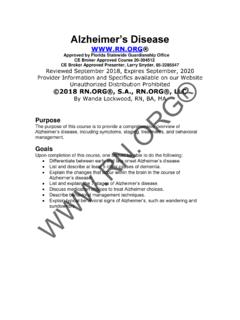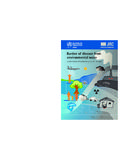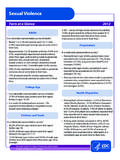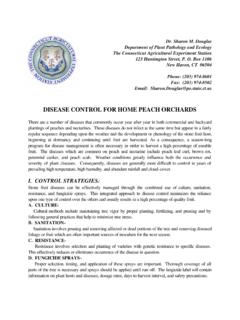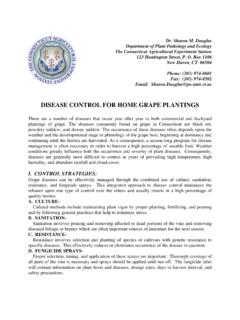Transcription of Bronze Disease: Understanding, Curing, and …
1 Bronze disease : Understanding, Curing, and Preventative TreatmentJason SanchezAssociate, American Numismatic SocietyMember, Crescent City Coin ClubDr. Ken Harl, University HistoryDepartmentFellow and Trustee, American Numismatic Society1 AgendaBronze disease : Understanding, Curing and Preventative Treatment What is Bronze disease ? Do I have a Patina, or Bronze disease ? If I have Bronze disease , what do I do? Long-term care: serious storage concerns2 What is Bronze ?Before we find out about Bronze disease , first, the more important question: what is Bronze ? An alloy of Copper (CU) of more than 90% purity in conjunction with other metals (usually tin, antimony and zinc) One of the first metals used by man Bronze Age man dated from c.
2 3,000 BCE in Asia Minor, but the use of Bronze is noted in some parts of Asia (Chiang Mai, Thailand and Sanxingdui, China) by c. 4,500 BCE American Pre-Columbian use of Bronze may have begun by 1000 CE Bronze was one of the first metals that was used for coinage Bronze coinage by far outstrips silver or gold as a constituent of the money supply for most countries up to the modern age3 What is Bronze disease ? Bronze disease is a condition in which the coin produces acid (normally hydrochloric or hydrosulfuricacid) internally, and begins to disintegrate The exterior usually exhibits green or brown growths that cover the pitting that acids will create Because these growths were originally believed to be caused by abacteria, the condition became known as Bronze disease Early numismatists actually tried to soak their coins in anti-bacterial washes to prevent the disease this probably only made matters worse!
3 4 Green fuzz an early stage warning sign5 Green fuzz an early stage warning sign6 Green fuzz an early stage warning sign7 Green isn t necessarily bad, however This can be indicative of a patina, an oxidizing layer which actually protects the coin Some collectors particularly of East Asian coins buy and sell coins exclusively based on their patinas A patina is normally more uniform it covers the entire coin and is a duller shade of green than Bronze disease8 Patination vs. Bronze disease A patina is a naturally occurring oxidation layer usually formed of copper chloride and copper oxides Many artists in particular attempt to create patinas, such as those found on works by New Orleans sculptor Enrique Alferezor the Statue of Liberty A patina is structurally safe and will protect the metal-so long asit is not disturbed by extremes of heat, humidity, acids, or environmental pollutions9Do I have a Patina, or Bronze disease ?
4 This may be the most important question you ask. A patina is safe; Bronze disease is not. Does the coin come from an area known to be subject to Bronze disease ? (Britain, Australia, southeastern China, parts of Europe) A region with relatively high humidity throughout the calendar year A region whose trace elements (tin, antimony, zinc) are impure or are known to occur in the presence of sulfur A region that has high amounts of sulfur or chlorine in the atmosphere, from oil refining or naturally-occurring in swamplands10Do I have a Patina, or Bronze disease ?This may be the most important question you ask. A patina is safe; Bronze disease is not. Is the green part universally on the coin, or occurring only in one or two places?
5 Can you scrape off the green part with a stiff toothbrush, a toothpick or fingernail? Is pitting occurring on the coin, or are there nicks in the rim? Is the coin acidic if you place it to a pH test? ( 0-4)Answer Yes to any of these questions and you probably have Bronze disease11 Pitting: The Patina is Covering the Reality that Acid is Eating the Metal Coin12 What is really going on?The copper chlorides mix with water vapor in the air and create a chemical CuCl+ H2O = 2 HCl+ Cu2O(stage one complete)2 HCl+ 2 Cu = 2 CuCl+ H2(stage two. Note that 2 CuCl+ H2 creates a sustaining reaction)Sulfur or other impurities may create variations with hydrosulfuricacid rather than hydrochloric acid. Reaction triggers include harsh handling/treating, sudden environment change, and prolonged exposure to that I have Bronze disease , what do I do?
6 Unlikely to be able to get professional help from museums, because: Liability, insurance issues Some larger, international dealers may have a buy-back policy or offer assistance But generally ..You re on your patient. This is going to take a long Physical Cooking with Coins?!?So I say to myself, SELF! Humidity is really excess water. Let s evaporate out the water, and then the damaging corrosive elementis gone! So ..Put your coins on a cookie sheet in the oven, bake at 375 for 45 minutes, let cool, and BAM!Sadly, this method won t workpermanently, as although this DOES get rid of the humidity temporarily, it will just come , it will darken your coins Physical See your dentist twice a year?!?Start by using a FIRM or HARD nylon toothbrush, and gently scrape the excess green discharge off the coin.
7 For firmly lodged debris, you canuse a toothpick or sharply pointed chopstickBe VERY CAREFUL if you use X-actostyle knives or Dremelsets, as these could permanently scrape and damage your the coins in distilled water (NOT artesian or still tap water) for 10-15 days to release the chloridesThis may seem counter-intuitive: the problem is water, so why soak it in water? But distilled water is chemically squeeky-clean and will actually serve to reverse the chemical processSome mild cases and early-stage problems can be prevented in this manner, but generally you will need to have stronger Chemical Fighting Acids with BasesTough Cases: Sodium SesquicarbonatePlace the coins in a glass container and fill with a 5% solutionof sodium sesquicarbonate.
8 Let them soak for about 14 days, replace the solution, and soak for another 14 days. Then, place the coinin distilled water for about a week. Don't have sodium sesquicarbonatelying around? You can make it with equal molar amounts of sodium carbonate (also called soda ash) and sodium bicarbonate (yes, you know what that is). For example, a 5% molalsolution would be of carbonate and of bicarbonate in 100ml of 5% solution WILL REMOVE any "patina" on the coin! If there is anexceptionally aesthetic "patina" to be preserved, try a 1% or 2%solution. Be warned, though, that it will take three times as long, and has a higher risk of being Beauty of a Green Patina ..Can be completely stripped off through cleaning!17 Getting Chemical Fighting Acids with BasesAlternate: Fish-tank Cleaning SolutionsDon t feel up to re-mastering your high school chemistry?
9 No Problem!Use a fish-tank cleaning solution. This is a pre-mixed base which you can add into distilled your coins for 2-3 days, followed by a quick rinse of the vessel, and another continue with another soak for 2-3 days, followed by 2-3 days of soaking in distilled water may have to repeat this process up to 10 weeks for stubborn cases!18 Getting Chemical The Heavy GunsBENZOTRIAZOLE(BTA)Dissolve benzotriazolein ethanol(6-7% solution) and soak the coin from 1 hour to 2 this step, move the coin back into distilled water for1 week to rest working with these chemicals PLEASE use appropriate safety equipment and work in a well-ventilated areaBTA will typically clear up any lingering problems and is often used as a sealant just before the coin is finally finished being BENZOTRIAZOLE IS A KNOWN CARCINOGENWARNING ETHANOL IS A DANGEROUS CHEMICAL AND CAN BE DIFFICULT TO PURCHASE19 Storage Your Final WorryAfter 5-15 weeks of treatment, your coins have been rid of Bronze disease and are perfectly cleanNow what?
10 Leaving them alone will only allow the problem to repeat!20 Storage Your Final WorrySome numismatists like to cover their coins in Renaissance Wax, or Polyvinyl Acetate Lacquer, which are microcrystalline waxes which prevent humidity from re-entering the coinsThis is the preferred treatment method of the British MuseumUnfortunately, it also makes the coin worthless to a collector, very difficult to ever clean again, and it s very hard to remove21 Storage Your Final WorryIf you can t do anything else, place your coins in inert plastic containers filled with silica gel(available at most packing or moving stores) and replace the silica gel at regular will absorb some of the moisture and generally keep the humidity low.

